
The story ofAlfa Romeo is full of tempting competition prototypes that never came to fruition or were never raced. We go back in time to before the Second World War, with the Tipo 512, which broke new ground in many areas.
Alfa Romeo powerless against the German steamroller
From 1934 onwards, the Italian and French makes, which had monopolized most of the victories for many years, fell into line. With millions of Reichsmarks, generously allocated by the new Nazi regime, Mercedes and Auto-Union were given the task of triumphing in the Grand Prix. For the Reich, this was an eminently political challenge, designed to symbolize the motorization of a conquering, technologically advanced Germany, provide grist for propaganda mills and test new solutions for future mechanized warfare. Armed with colossal resources and obvious technological superiority, German teams racked up victories and titles, relegating Italian cars to the role of extras, apart from a few feats such as that of Tazio Nuvolari at the Nürburgring in 1935.

While Mercedes took most of the credit, it was Auto-Union that created the sensation by unveiling the Type A single-seater. Designed by Ferdinand Porsche, this machine revolutionized racing with its novel engine architecture, placed in a central rear position behind the driver. The driver is positioned far forward of the car, with the cavalry, a V16 engine, at his back. This was more than twenty years before the rear-engine revolution in F1 with Cooper and Lotus! The concept continued to evolve, culminating in the 1936 C-Type with its aluminum beam chassis and 520 hp supercharged V16! With their rear mid-engine and demonic power, Auto-Unions are very tricky to drive, not to say dangerous, but their performance is astonishing.
Things are getting tougher for Alfa Romeo
Alfa Romeo tried to fight back, but to no avail. In addition to recurring financial problems and a sports management system involving the brand's management board, the Italian state and Ferrari, the 8C-35 and 12C-36 single-seaters, then the 12C-37, were unable to follow in the footsteps of the P3. As for the 308, introduced in 1938 in line with the new 3-liter formula, it was sorely lacking in power against the Germans. It has to be said that the brand spread itself too thin at the time, developing three different engines: in-line 8-cylinder, V12 and V16! The great Nuvolari, exasperated by the technical problems and lack of performance, even moved over to Auto-Union in 1939!
From 1938 onwards, Alfa Romeo gave up challenging Mercedes and Auto-Union in the international 3-liter Formula (the one on which the European championship was based), and focused on the lower 1.5-liter "voiturette" category, which was to become the new Grand Prix standard from 1940 onwards. Ferrari oversaw the development of the Alfa Romeo 158, powered by a 1,500cc in-line 8-cylinder with Roots compressor, leaving Mercedes and Auto-Union to share the laurels in the premier Grand Prix formula.

Revolution(s) at Alfa
Sporting management also underwent a major change, returning to the direct control of the manufacturer via its official Alfa Corse racing department, which absorbed Scuderia Ferrari, and transferred the infrastructure from Modena to Portello. In 1939, Alfa Romeo was already thinking about replacing the 158 for the 1940 season. Enzo Ferrari slammed the door, no longer able to tolerate the loss of freedom and control he had enjoyed at the Scuderia. But Spanish engineer Wifredo Ricart, whose relations with Ferrari had been strained, set to work to design an innovative single-seater. An enthusiast of noble, sophisticated mechanics, which would be found again after the war at Hispano-Suiza, Ricart succeeded Vittorio Jano, who had left for Lancia. He had already designed the impressive Tipo 162, powered by a compressed 135° V16 with a displacement of 3 liters and 490 hp! The Tipo 512 was to mark a veritable revolution, both for Alfa Romeo and for motoring in general.
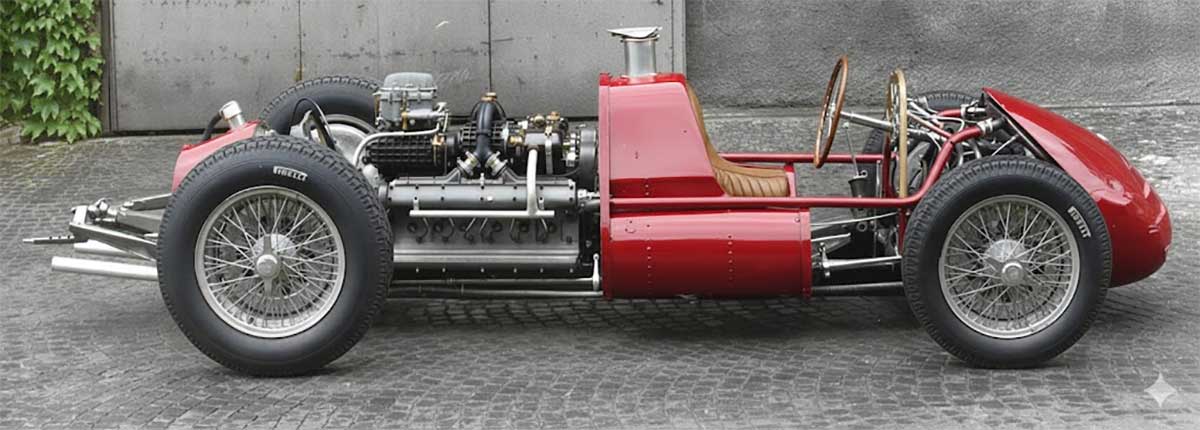
Inspired by the performance of the Auto-Union, Wifredo Ricart opted for a mid-rear, longitudinal engine architecture, a first for Alfa Romeo. The engine in question is an original 12-cylinder, short-stroke boxer engine with a displacement of 1.5 liters, supercharged by two compressors. The engine features a low center of gravity and a more streamlined body, which, on paper, allows for higher top speeds.
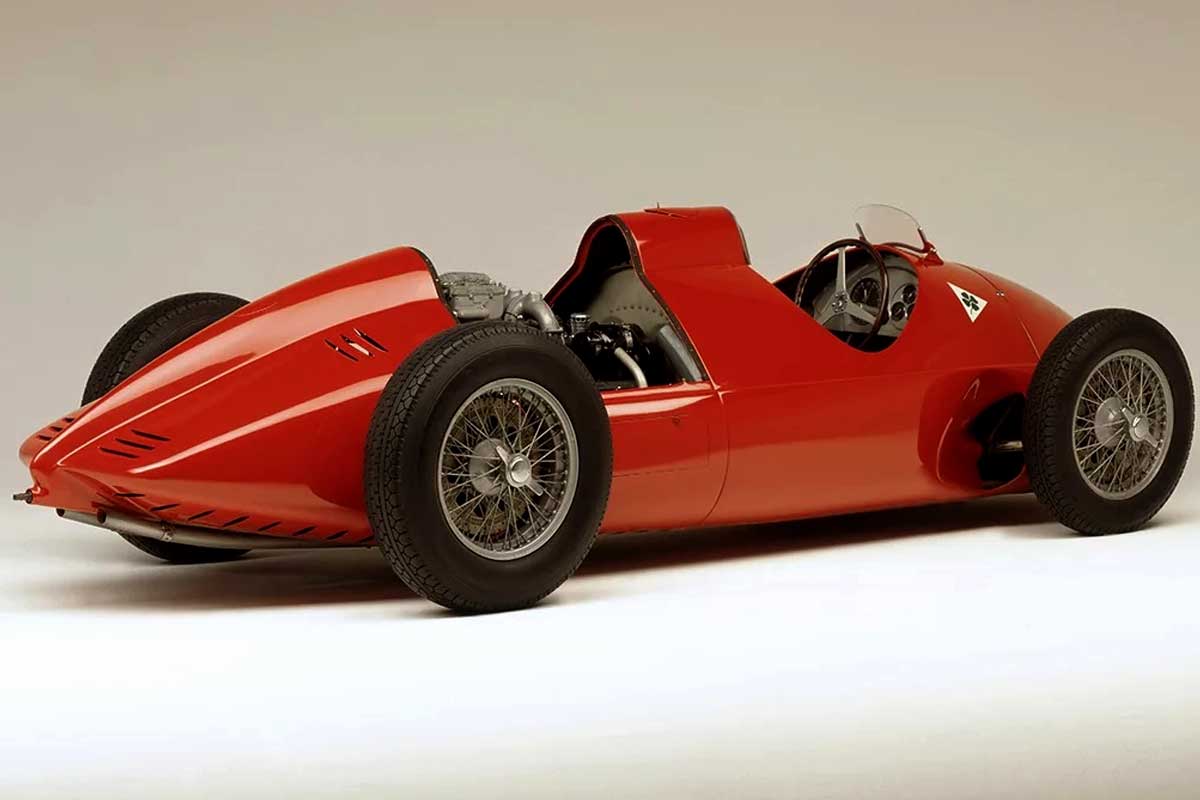
Indeed, the 512's styling was a marked departure from previous Biscione machines. The front end, rounded in the pure streamline style of the period, would earn it the nickname "cigar car", while the stern features a pointed tail to accentuate aerodynamic support. The fuel tank is positioned directly behind the driver, and the gearbox behind the rear axle. Suspension was also improved, with the adoption of a De Dion-type rear axle with longitudinal torsion bar, and telescopic shock absorbers.
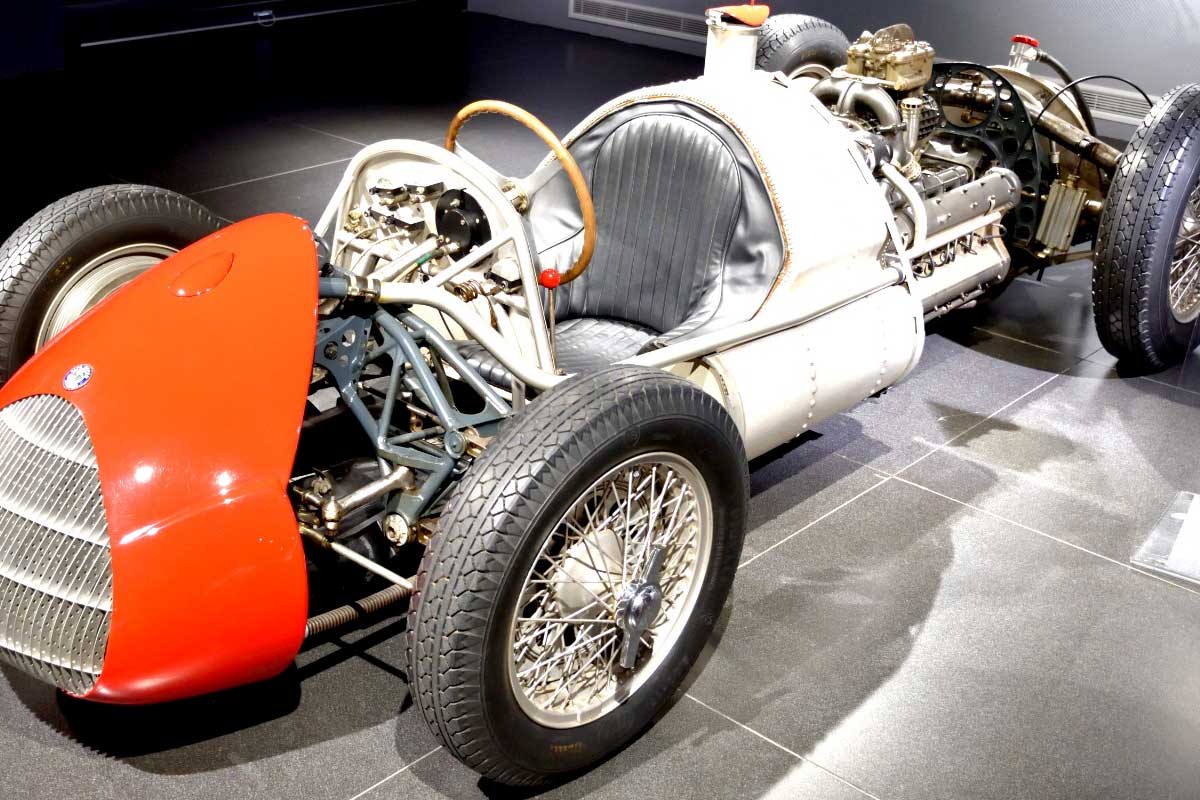

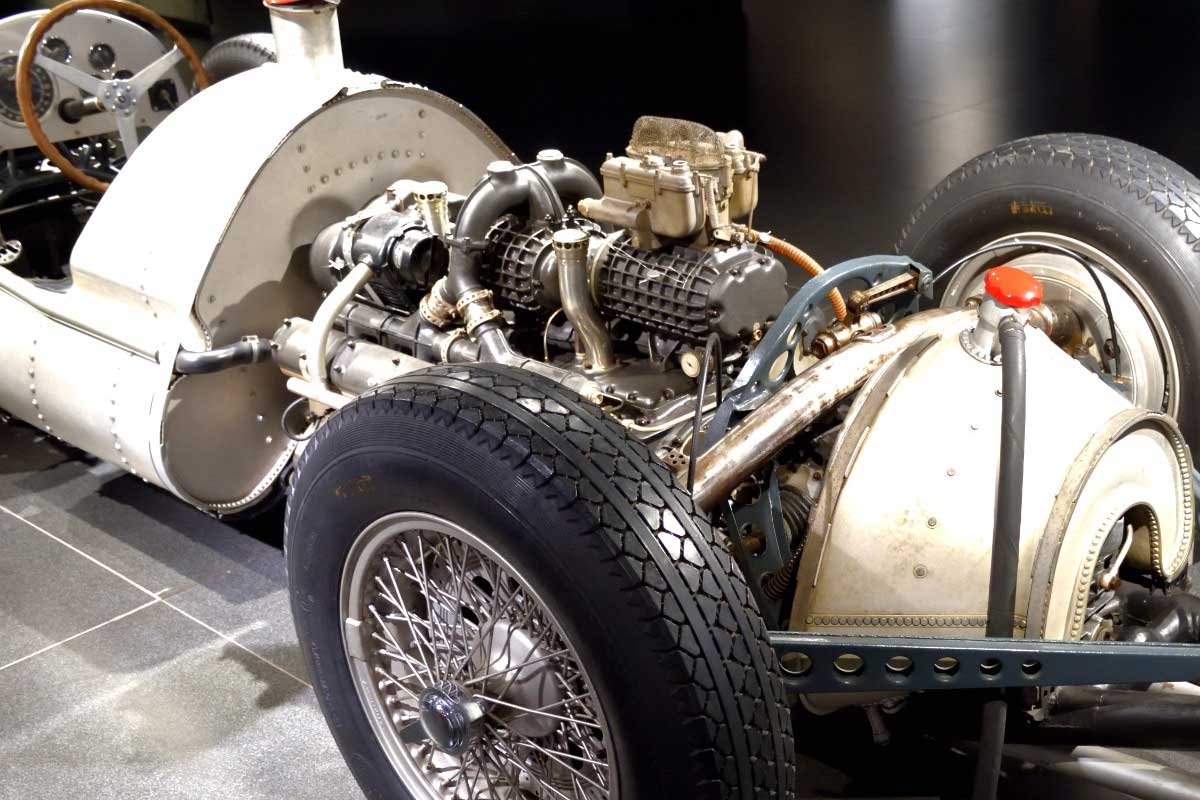
Two tests, then the torments of history
Despite the outbreak of war (Italy didn't officially enter until June 1940 with its "stab in the back"), Alfa Romeo continued to work on the design of the new Grand Prix car in 1940. At the start of development, the engine was rated at 225 hp, but a dyno test measured 370 hp at 8,600 rpm. However, at the Alfa Romeo Museum, where the two 512s are on display, it is stated that the car would reach a top speed of 350 km/h with 550 hp at 11,000 rpm. Such figures are difficult to validate, as the cars have never officially taken part in a race. But we can dream!
Two tests were nevertheless carried out. On June 19, 1940, a Tipo 158 fitted with the 512's rear suspension was driven on the Milan-Varese freeway by Attilio Marinoni, who unfortunately died in an accident with a truck. In September 1940, the Alfa Romeo Tipo 512 was officially tested for the first time by mechanic and test driver Consalvo Sanesi at Monza. As the car reached high speeds on the track, Sanesi was visibly chilled by the car's handling.
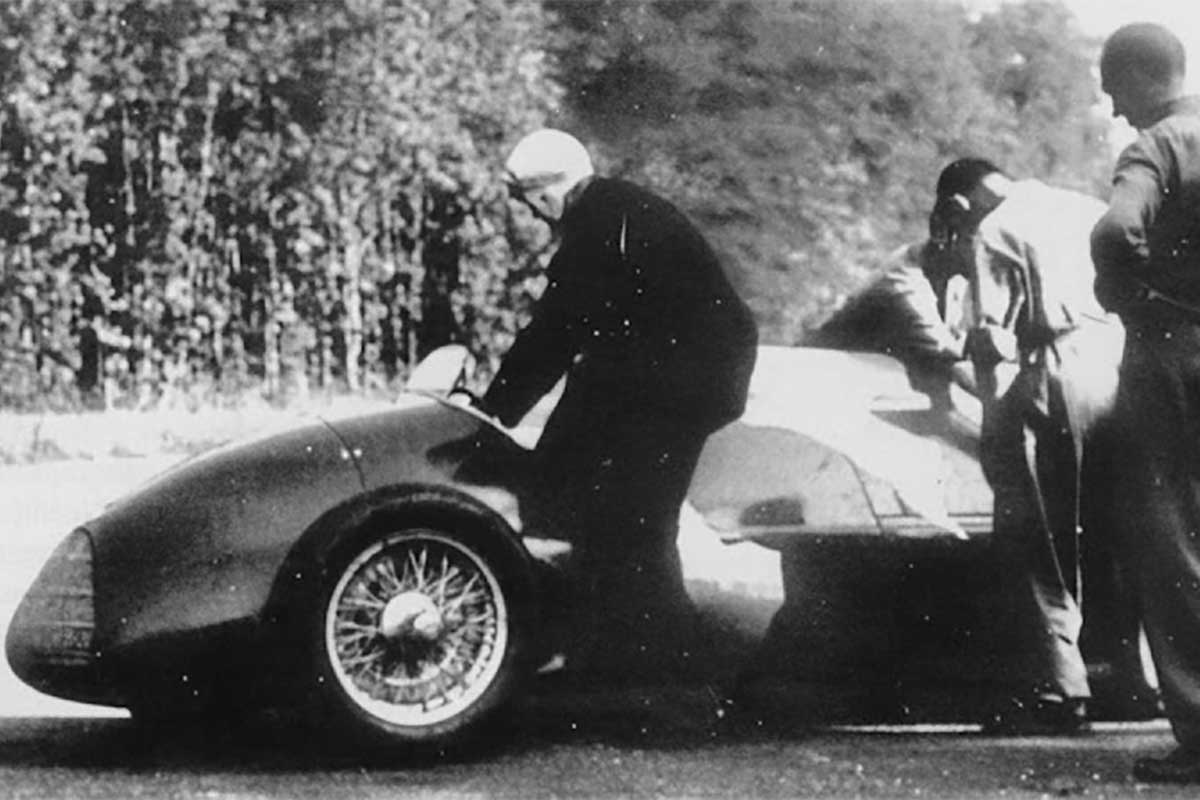
Of course, subsequent political and military events render all this anecdotal. The two prototypes were locked away in a factory, with rumours of development work continuing until 1943, but without success. After the war, Alfa Romeo decided to extend the career of the 158 for the resumption of racing, before giving it the 159 as its descendant, which triumphed in the first two F1 world championships. The 512 remained a stillborn racing car, and one wonders what it would have been capable of in real-life conditions!


Thank you for this article.
You can't help but love Alfa Romeo.